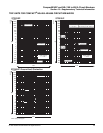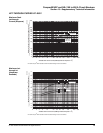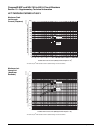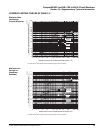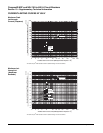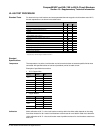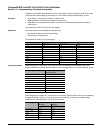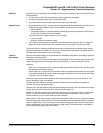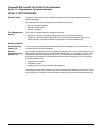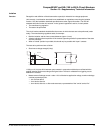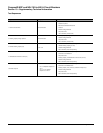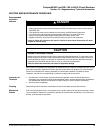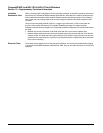
Compact® NSF and NSJ 150 to 600 A Circuit Breakers
Section 13—Supplementary Technical Information
© 1995–2003 Schneider Electric All Rights Reserved
69
Dielectric After testing, the circuit breaker must withstand for one minute a voltage of 1000 V plus twice the rated
voltage between:
• Line and load terminals with circuit breaker in open, tripped and off positions
• Terminals of opposite polarity with circuit breaker closed
• Live parts and the overall enclosure with circuit breaker open and closed
Optional Tests
• High available fault current—circuit breakers having passed all the standard tests may have the UL
Listing label applied at higher values than the standard; test sequence is as follows:
— 200% calibration
— Interrupting capacity: an opening operation followed by a close-open operation (O-and-CO) on
all poles are performed on the circuit breaker
The power factor over 20000 A shall be 0.15–0.2 lagging:
— Trip out at 250%
— Dielectric at twice the rated test voltage
• 100% rated—circuit breakers having passed all the standard tests may have the UL Listing label
applied to use the circuit breaker in an enclosure when carrying 100% of its maximum rating
The circuit breaker is submitted to additional temperature tests performed as standard tests, except
that the circuit breaker is installed in an enclosure. The dimensions and possible ventilations shall be
recorded and shall be marked on the circuit breaker.
Tests On
Accessories
Shunt trip and Undervoltage Trip—these devices are submitted to temperature, overvoltage, operation,
endurance and dielectric tests.
Overvoltage Test—the device must be capable of withstanding 110% of its rated voltage continuously
without damage (this test does not apply to a shunt trip with an "a" contact connected in series).
Operation:
Shunt Trip—must operate at 75% of its rated voltage (except shunt trip devices for use with ground-
fault protection shall operate at 55%).
Undervoltage Trip—must trip the circuit breaker when the voltage is less than 35% and may trip the
circuit breaker between 35 and 70% of its rated voltage and shall pick-up and seal when the voltage
is at 85% or more of its rated voltage.
Endurance—the device must be capable of performing successfully for 10% of the number of "with
current" operations of the circuit breaker.
Auxiliary and Alarm Switches—auxiliary and alarm switches must be submitted to temperature,
overload, endurance and dielectric tests.
Overload Test—the test consists of fifty operations making and breaking 150% of rated current at rated
voltage, with a 75–80% power factor in ac and non-inductive load in dc.
Endurance—the switch must make and break its rated current at rated voltage, with a 75–80% power
factor in ac, and non-inductive load in dc for 100% of the number of operations "with current" for
auxiliary switches, and 10% of this number for alarm switches.
Motor Operator—the motor operator shall perform the number of "without current" operations indicated
for the circuit breaker endurance tests. The first 25 operations shall be conducted at 85% of the motor
operator voltage rating. The circuit breaker is to be tripped during these tests. The next 25 operations
shall be conducted at 110% of the motor operator voltage rating. The balance shall be completed at
rated voltage without tripping the circuit breaker.



